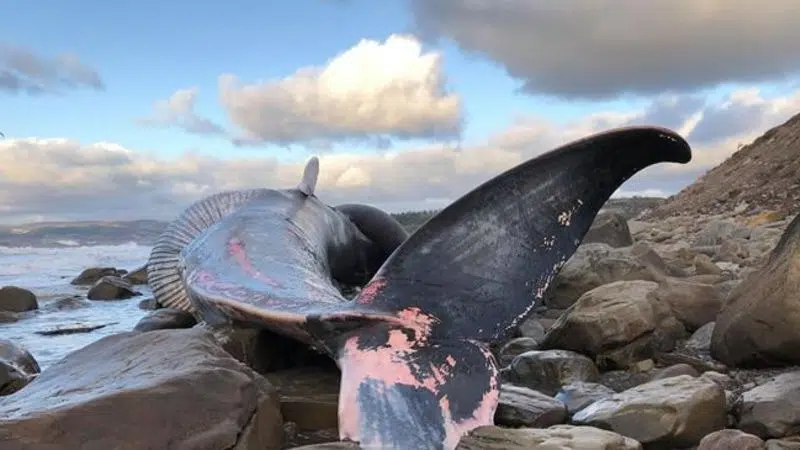
Carcass of young, endangered blue whale found on Cape Breton beach
MABOU, N.S. — The death of a young blue whale off Cape Breton is drawing the attention of an expert on the species who would like to know if it’s the latest case of a fatal ship strike in the Gulf of St. Lawrence.
The body was spotted last week at Sutherland’s Cove, about six kilometres north of Port Hawkesbury, N.S., and was confirmed by the Marine Animal Response Society to be a juvenile just under 17 metres long.
However, the federal Fisheries Department hadn’t confirmed by late Tuesday whether the body will be towed to a suitable location for a necropsy.
Richard Sears, a scientist with the Mingan Island Cetacean Study who is based in St-Lambert, Que., said Tuesday it’s important to know what killed the whale.


